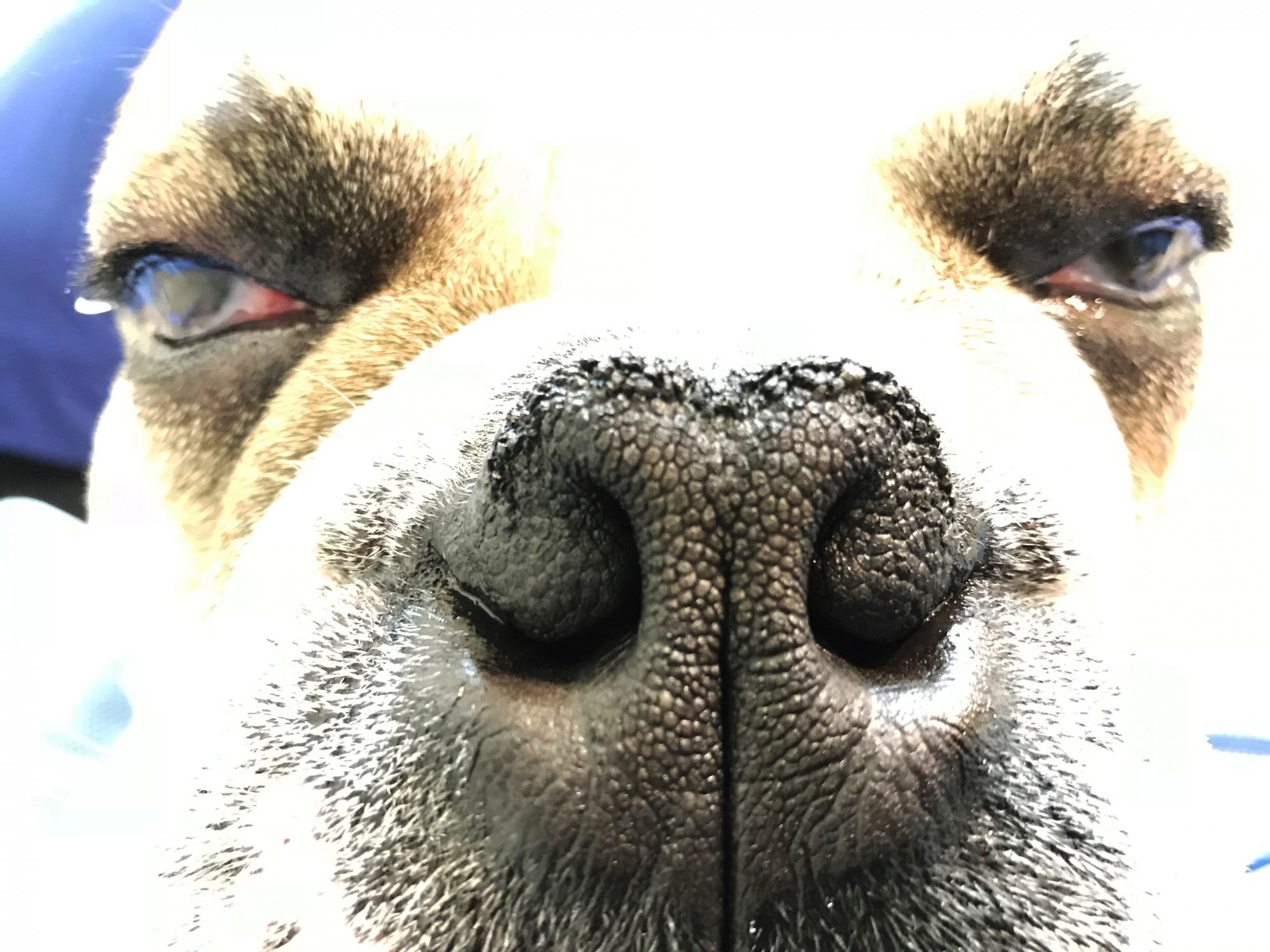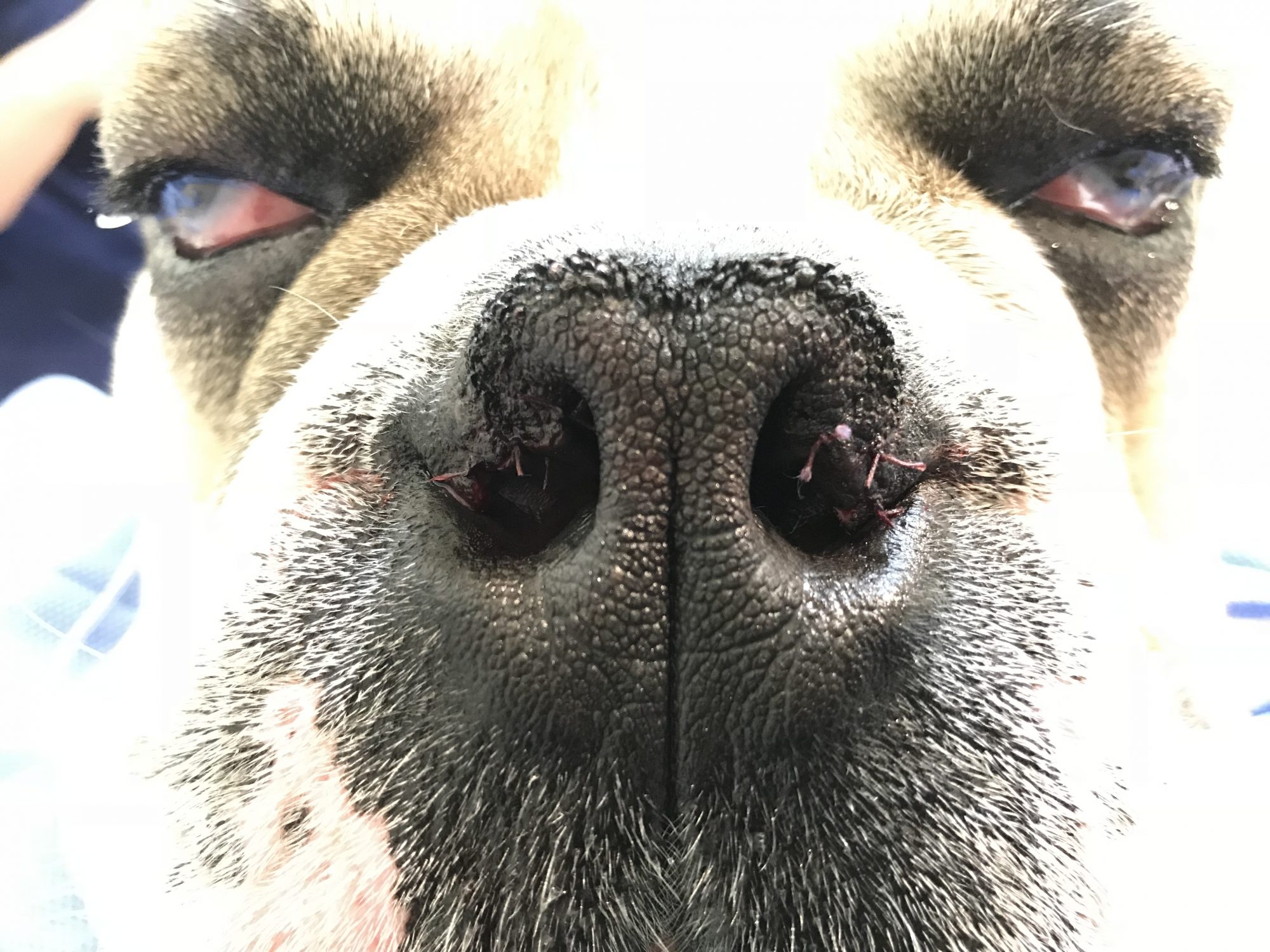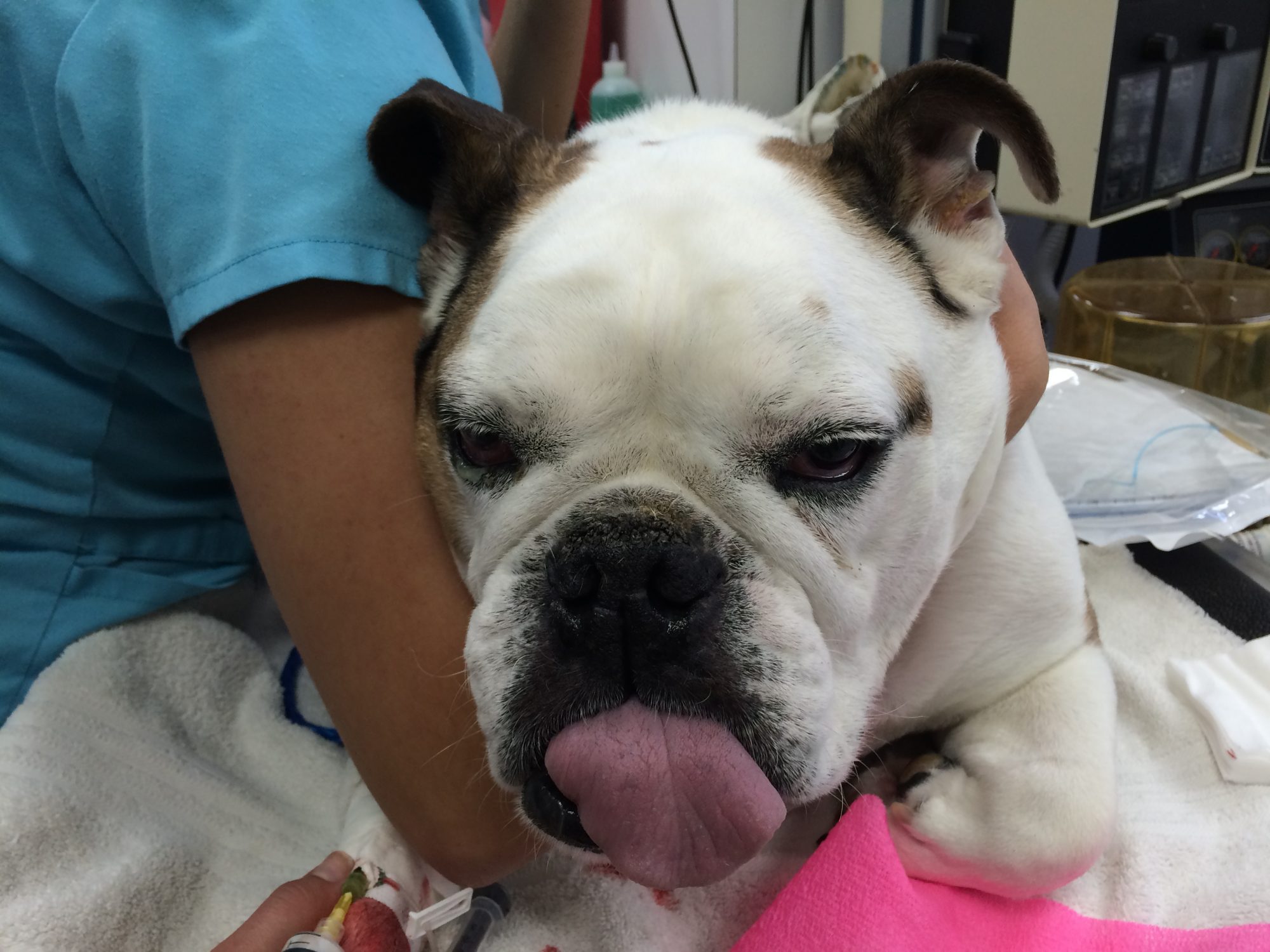Dr. Phil Zeltzman’s Blog
Why did Phoebe need a nose job?
Phoebe is a 3 year old bulldog who was struggling to breathe. Her breathing was very loud and harsh. She couldn’t function without panting. She snored while sleeping. Was easily overheated.
Things got progressively worse and she was nearly suffocating. She was taken to the emergency clinic where she was sedated to place a breathing tube to allow her to calm down, lower her temperature and get her oxygenation up to normal.

All Bulldogs (French, English), Boston Terriers, Pekinese, Boxers and Pugs are called brachycephalic breeds (which means “short skull”). They have a short snout and a flat face. Not all brachycephalic breeds have brachycephalic syndrome, but it should be suspected until proven otherwise.
Brachycephalic syndrome usually has three parts:
. An elongated soft palate, which means that the back of the roof of the mouth is so long that it covers the opening to the windpipe.
. Saccules are fleshy structures at the opening of the airway. When brachycephalic breeds have difficulty breathing, over time, the saccules are mechanically pulled out into the airway.
. Stenotic nares are smaller nostrils than normal, which again prevents getting enough oxygen.

Notice the tiny openings before surgery
There is at least one more issue: Bulldogs, in particular, have a tiny windpipe. There is nothing we can do about it, but it certainly doesn’t help these dogs breathe.
We can however fix all 3 issues mentioned above.
Phoebe needed all 3 repaired:
. Her elongated soft palate was shortened.
. Her “everted” saccules were removed.
. Her almost non-existent nostrils were widened.

Notice the much wider nostrils after surgery
Some surgeons recommend doing a nose job on brachycephalic puppies as early as 3 to 4 months of age. Why so young? Because we hope that if we fix the nose at that age, and the dog doesn’t struggle to breathe, the soft palate and saccules may remain pretty normal.
So we feel that it’s better to widen the nostrils at a young age, which is not very invasive, than to do the full 3 surgeries at a later age. At that point, there are many other additional changes that we simply cannot repair.
While the pup is under anesthesia, we also recommend doing a spay or a castration. This is a great way to prevent spreading the bad genes to future generations, among many other benefits.
Phoebe recovered very well after surgery. She was able to breathe much better by day and stopped snoring at night. Ironically, it also helped her owners sleep better at night.
Phil Zeltzman, DVM, DACVS, CVJ, Fear Free Certified

Dr. Phil Zeltzman is a traveling veterinary surgeon in Pennsylvania & New Jersey. An award-winning author, he loves to share his adventures in practice along with information about vet medicine and surgery that can really help your pets. Dr. Zeltzman specializes in orthopedic, neurologic, cancer, and soft tissue surgeries for dogs, cats, and small exotics. By working with local family vets, he offers the best surgical care, safest anesthesia, and utmost pain management to all his patients. Sign up to get an email when he updates his blog, and follow him on Facebook, too!
Look at your dog’s head and predict health problems
The pet insurance branch of Nationwide recently released a report that shows that brachycephalic dogs have a higher risk for several diseases.

Brachycephalic dogs have a flat face. They tend to have a shorter skull, a shorter snout or muzzle and bulging eyes. Because of the shape of their skull, they often have breathing difficulties.
In an English Bulldog, the poster child for brachycephalic dogs, the nostrils are routinely very small (“stenotic nares”). This limits the flow of oxygen. In addition, a Bulldog can have a soft palate that is too long (the back part of the roof of the mouth), everted laryngeal saccules (small fleshy parts inside the larynx or voice box), and a small wind pipe (trachea). This blocks the flow of oxygen even more, which is why these dogs pant all the time. They are literally suffocating.
The smooshed face also leads to extra skin folds that can become irritated or infected.
The report shows a higher risk for skin diseases and eye problems.
Besides Bulldogs, brachycephalic dog breeds include the Affenpinscher, Boston terrier, boxer, Brussels griffon, old English bulldog, shih tzu, cavalier King Charles spaniel, dogue de Bordeaux, French bulldog, Japanese chin, Lhasa apso, mastiff, Brazilian mastiff, bull mastiff, English mastiff, Neapolitan mastiff, Pyrenean mastiff, Tibetan mastiff, Spanish mastiff, pekinese and pug.
What should you do?
All of these dogs can be wonderful pets, you just need to be aware of the health risks before you adopt them.
So what should you do if your dog has similar problems? The secret to avoid breathing problems later in life is to widen the nostrils as early as possible. Several articles* recommend at 3 to 4 months of age. The challenge is to operate on these dogs before the usual age to spay or neuter a dog. I agree 100% with these articles, early intervention is key.
As to the other issues, mainly skin diseases and eye problems, they are a whole different story. See your vet early on, before the problems go out of control.
Phil Zeltzman, DVM, DACVS, CVJ, Fear Free Certified
* Source: Here is a quote for an article about these patients: “It is recommended to perform rhinoplasty in puppies with this abnormality at 3 to 4 months of age to avoid progression to secondary changes, such as laryngeal collapse or pharyngeal edema.”

Dr. Phil Zeltzman is a traveling veterinary surgeon in Pennsylvania & New Jersey. An award-winning author, he loves to share his adventures in practice along with information about vet medicine and surgery that can really help your pets. Dr. Zeltzman specializes in orthopedic, neurologic, cancer, and soft tissue surgeries for dogs, cats, and small exotics. By working with local family vets, he offers the best surgical care, safest anesthesia, and utmost pain management to all his patients. Sign up to get an email when he updates his blog, and follow him on Facebook, too!

